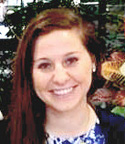Lessons from a Volunteer-Run Library of Things
We read a lot about volunteer engagement and leadership from the perspective of agencies who have paid Volunteer Managers – those who oversee, manage and coordinate the efforts of the volunteer team who are committed to support the work of their agency. In those conversations, it’s often easy to forget that the vast amount of volunteer leadership occurs in ‘all volunteer’-led organisations, where there is no paid staff member to take control and where the challenges can sometime be different from having a single person designated to that leadership role.



 Founded in 1901, the Junior League rapidly became the most influential women’s organization in the United States. Today there are also chapters in Canada, Mexico, and the United Kingdom. Its mission statement puts volunteering and women front and center:
Founded in 1901, the Junior League rapidly became the most influential women’s organization in the United States. Today there are also chapters in Canada, Mexico, and the United Kingdom. Its mission statement puts volunteering and women front and center: Do church volunteers ever experience conflict? Of course they do. Conflict is unavoidable and, when handled in a healthy way, can even result in benefits. Identifying strategies for building unity and minimizing unhealthy conflict among church volunteers are crucial steps in a ministry’s success.
Do church volunteers ever experience conflict? Of course they do. Conflict is unavoidable and, when handled in a healthy way, can even result in benefits. Identifying strategies for building unity and minimizing unhealthy conflict among church volunteers are crucial steps in a ministry’s success.